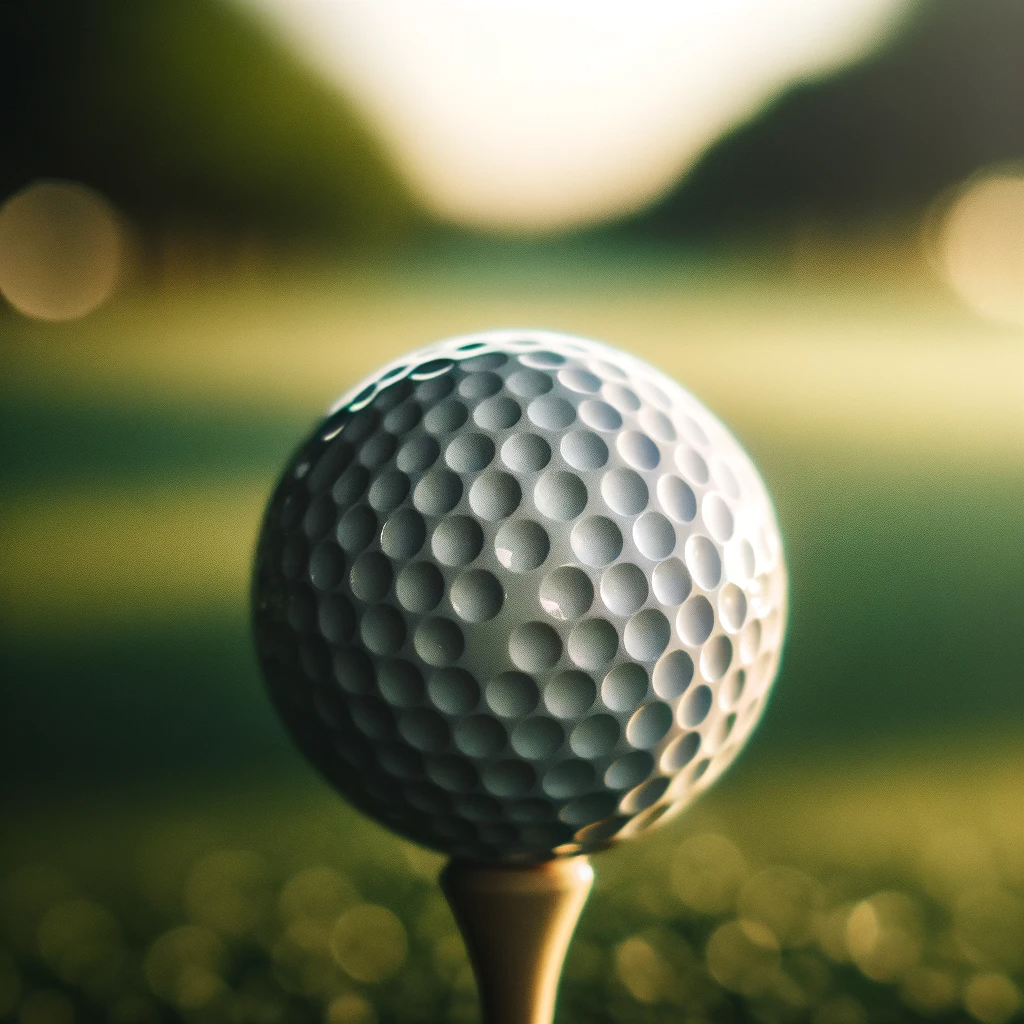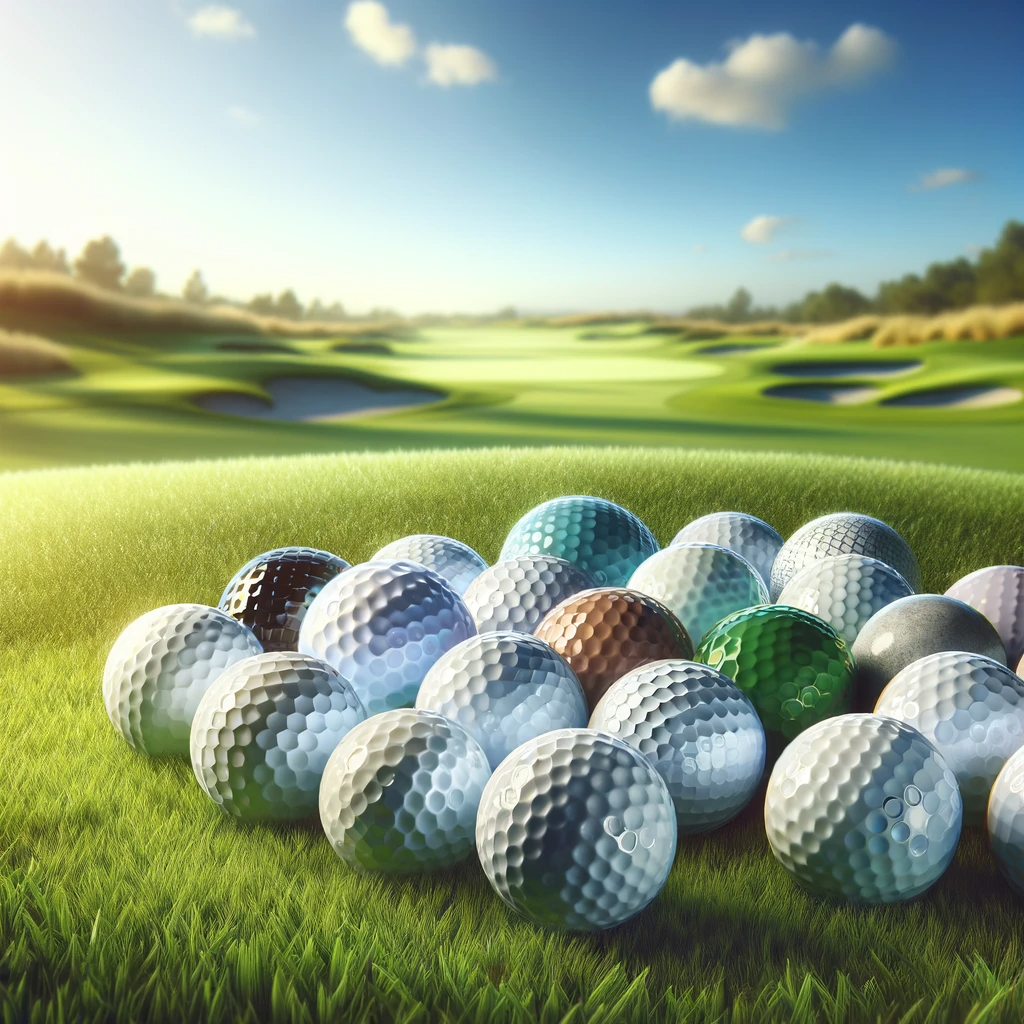- Home
- Equipment
- Golf Balls
- What Golf Balls Are Best for Beginners
Unlocking the Fairway: The Ultimate Guide to Choosing Golf Balls for Beginners
Stepping onto the golf course as a beginner can be daunting, especially when it comes to choosing the right equipment. Among the myriad of choices, selecting the right golf ball is crucial yet often overlooked. This guide, "Best Golf Balls for Beginners: A Comprehensive Guide," is tailored to demystify the selection process for you. It offers practical advice, reviews popular choices, and provides tips to enhance your game. Whether you're looking to improve your distance, accuracy, or just enjoy the game more, this guide has got you covered. Don't miss the key takeaways and the FAQ section at the bottom if you're short on time!
As a fellow weekend golfer, I know the struggle of stepping onto the course, feeling the mix of excitement and nervousness. You're ready to swing, but there's a nagging question in your mind: "Am I using the right golf balls?" It's a common dilemma for beginners, where the vast array of choices can be overwhelming.
Remember the time you hit what felt like a perfect drive, only to see the ball veer off course, or fall frustratingly short? Or those putting greens where the ball just wouldn't behave? It's not just about your swing; the golf ball you use plays a crucial role. Choosing the wrong ball can mean the difference between a satisfying thwack and a disappointing dud.
That's why I've put together this comprehensive guide, "Unlocking the Fairway: The Ultimate Guide to Choosing Golf Balls for Beginners." Drawing from my 25 years of golfing experience and countless conversations with pros and fellow enthusiasts, this guide is tailored to help you, the beginner, make an informed choice. We'll dive into the types of golf balls, understand their science, explore top picks, and share practical tips to enhance your game. Let's embark on this journey to find your perfect golf ball and elevate your game!
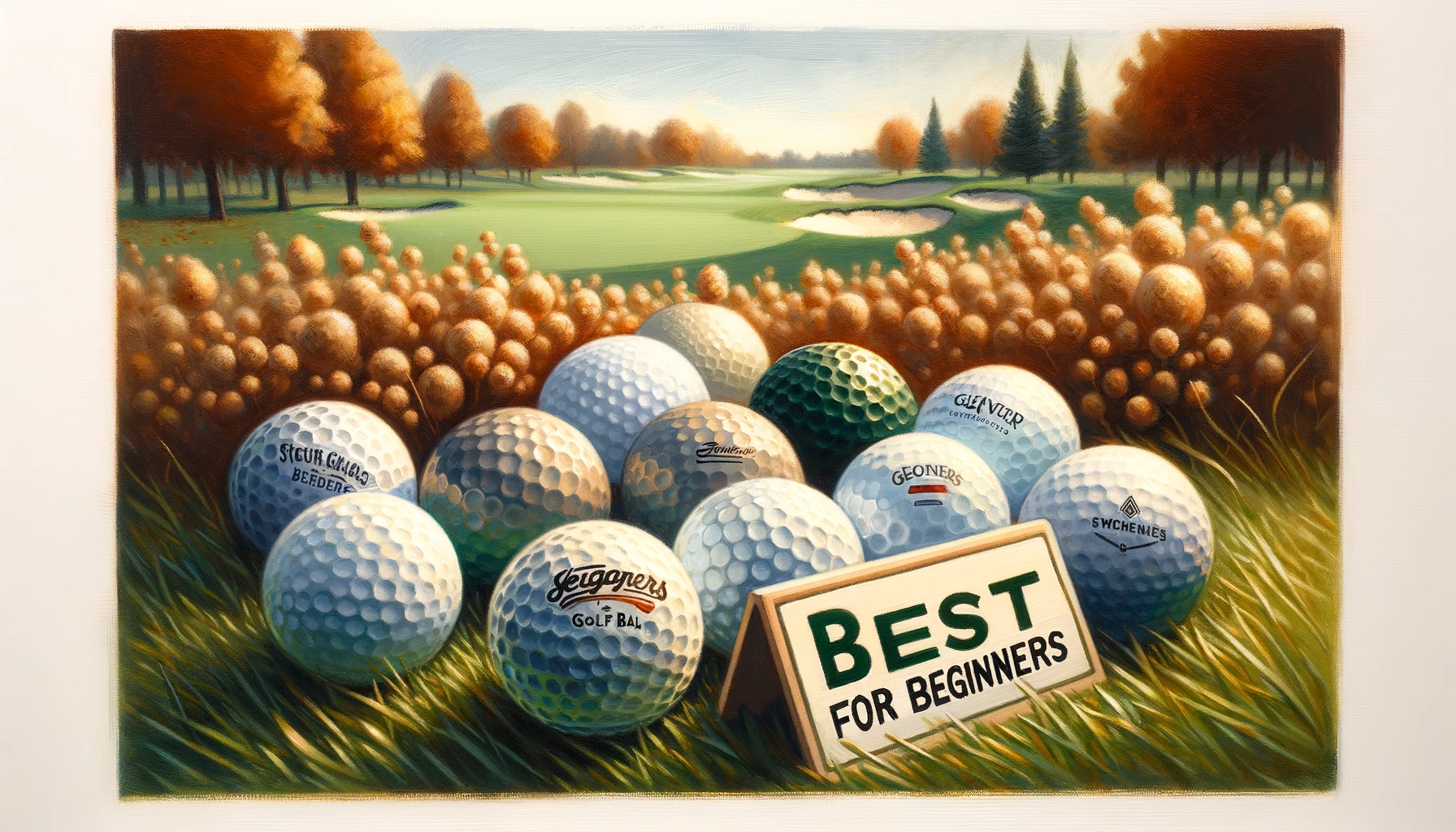 A beginner's guide to golf balls: Find your perfect match
A beginner's guide to golf balls: Find your perfect matchUnderstanding Golf Ball Types: A Beginner's Primer
Hey there, fellow golfer! Let's dive into the world of golf balls – a topic that might seem as complex as choosing the right club from your bag. But fear not, I'm here to guide you through this maze.
1. Introduction to Different Types of Golf Balls
First off, let's break down the types. There are mainly three types of golf balls: two-piece, multi-layer (three or four-piece), and high-performance balls.
- Two-Piece Balls: These are your go-to as a beginner. They're durable, affordable, and designed for distance. The solid core is typically made of a high-energy resin or rubber, covered by a tough, cut-proof cover that gives you that extra oomph in your drives.
- Multi-Layer Balls: As you progress, you might flirt with these. They offer more spin control and feel, thanks to additional layers that create a more nuanced interaction between the club and the ball. However, they can be a bit pricey and might not be the best investment when you're just starting.
- High-Performance Balls: Let's be real – these are more for the pros and low-handicappers. They're engineered for precise control and exceptional feel, but as a beginner, their nuances are like fine wine to a novice drinker – hard to appreciate fully.
2. How Construction and Materials Affect Performance
The construction of a golf ball significantly impacts its performance. The core's composition, the number of layers, and the cover material all play a role.
- Core: The heart of the golf ball. A softer core means more energy transfer and distance, ideal for beginners who are working on their swing speed.
- Layers: More layers equal more spin control and feel. As a beginner, too much spin might not be your friend. Stick to fewer layers to keep the game simpler and more enjoyable.
- Cover: Surlyn® and urethane are common materials. Surlyn® covers are more durable and provide less spin, while urethane covers, used in multi-layer balls, offer more control and a softer feel.
3. Identifying What Makes a Golf Ball Beginner-Friendly
So, what makes a golf ball beginner-friendly? It boils down to three things: durability, distance, and forgiveness.
- Durability: You want a ball that can withstand those occasional mis-hits and rough encounters with trees and cart paths.
- Distance: Look for balls that promote greater distance, which is a huge confidence booster as you're learning.
- Forgiveness: Balls that reduce sidespin can help straighten out those frustrating hooks and slices.
Remember, the right golf ball for you is one that complements your current skill level and playing style. As you grow in your golf journey, your golf ball choice should evolve too.
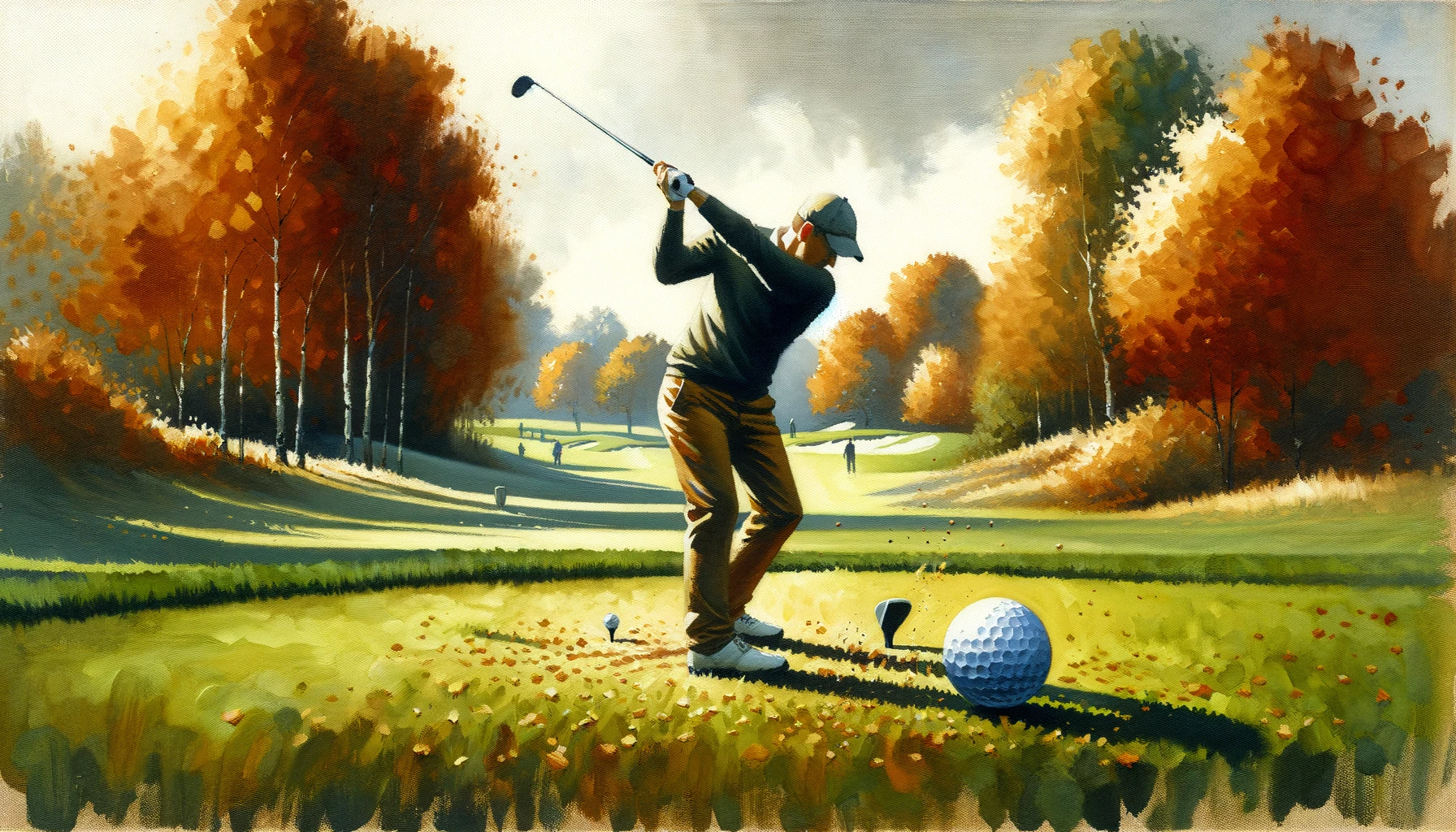 Capturing the joy of golf: A beginner's journey starts here
Capturing the joy of golf: A beginner's journey starts hereThe Science Behind Golf Ball Selection: What Beginners Need to Know
Alright, let's get a bit technical but in a fun way. Understanding the science behind golf ball selection can be as exciting as nailing that perfect drive. So, let's explore the key factors that influence how a golf ball behaves and how these can impact your game as a beginner.
1. Exploring Factors like Compression, Dimple Pattern, and Spin
- Compression: Think of compression as the 'softness' of the golf ball. Lower compression balls (with ratings around 50-70) are softer and deform more on impact. This means they require less force to compress and spring off the clubface, making them ideal for beginners with slower swing speeds. Higher compression balls need faster swings to achieve the same effect.
- Dimple Pattern: Those tiny indentations on the golf ball aren't just for show. They reduce air resistance and influence the ball's lift and drag. A smoother ball would just plop down straight out of the air! Different dimple designs can affect the trajectory and stability of your shots. As a beginner, you don't need to get too hung up on dimple specifics, but it's good to know they're part of the magic.
- Spin: Spin can be your best friend or your worst enemy. Low-spin golf balls reduce the sidespin that causes hooks and slices, making them more forgiving for beginners. High-spin balls are great for more experienced players who want more control and the ability to shape their shots.
2. How These Factors Influence a Beginner's Game
As a beginner, your main focus should be on enjoying the game and improving basic skills. The right golf ball can help with that:
- Forgiveness: Lower compression and low-spin balls can forgive your mis-hits, making the learning process less frustrating.
- Distance: A lower compression ball can help you achieve greater distances, even with slower swing speeds, adding to the satisfaction of your game.
- Consistency: Using the same type of ball consistently helps in developing a consistent swing and understanding how your shots behave.
3. Matching Golf Ball Characteristics to Your Playing Style
Your playing style is unique, and your golf ball should complement it. Consider these aspects:
- Swing Speed: If you have a slower swing speed, a lower compression ball is your ally. It will help you get the most out of each swing.
- Typical Mis-hits: If you often find yourself fighting slices or hooks, a low-spin ball can help straighten out your shots.
- Preference for Feel: Some golfers prefer a softer feel at impact, which is more about personal preference and comfort.
In conclusion, the science of golf ball selection isn't just for the pros. Understanding these basics can significantly enhance your game as a beginner. Remember, the right ball for you is one that suits your current abilities and helps you enjoy the game more.
Top Picks: Best Golf Balls for Beginners
Now, let's talk about the fun part – picking out the best golf balls for you, the beginner. I've scoured the market, talked to fellow golfers, and even tested a few myself to bring you this list of top picks. Let's compare their features, benefits, and price points, and I'll share some personal experiences.
1. Reviewing Popular Golf Balls Recommended for Beginners
- Titleist TruFeel: Known for its ultra-soft feel, the TruFeel is a fantastic choice for beginners. It's a low-compression ball, which means it's forgiving on mis-hits and great for slower swing speeds. Plus, it's from Titleist, a brand synonymous with quality in golf.
- Callaway Supersoft: As the name suggests, these are super soft, low-compression balls ideal for beginners. They're designed to reduce spin, helping to straighten out those wayward shots. An added bonus is the variety of fun colors they come in – great for adding a bit of personality to your game!
- Srixon Soft Feel: This ball is a great all-rounder with a soft core and a durable cover. It's designed to provide a high launch and low spin, making it easier to get the ball airborne and keep it on course.
- TaylorMade Noodle Long & Soft: These are budget-friendly and offer a great mix of distance and soft feel. They're particularly good for beginners who are working on extending their drive distances.
2. Comparing Features, Benefits, and Price Points
- Titleist TruFeel: It's a bit pricier than some other beginner balls, but its exceptional feel and control are worth the investment, especially if you're serious about improving your game.
- Callaway Supersoft: These are moderately priced and offer great value for their performance. The reduced spin and soft feel make them a forgiving option for new players.
- Srixon Soft Feel: These are priced competitively and offer a great balance between performance and cost. They're durable too, so they'll last you a while.
- TaylorMade Noodle Long & Soft: These are among the most affordable options. They're perfect for beginners who want to practice without worrying too much about losing balls.
3. Personal Experiences
- Titleist TruFeel: I noticed my shots were straighter and had a nice feel off the clubface. Definitely helped boost my confidence.
- Callaway Supersoft: I love the color options! They're easy to find on the course, and they really do fly straighter.
- Srixon Soft Feel: These were recommended to me by a friend, and I've noticed a real improvement in my game since switching.
- TaylorMade Noodle Long & Soft: For the price, these are unbeatable. I don't feel as bad if I lose one, and they still perform really well.
Choosing the right golf ball as a beginner doesn't have to be a daunting task. Consider your playing style, budget, and what you want to achieve on the course. And remember, the best way to find your perfect match is to try a few different types and see what works best for you.
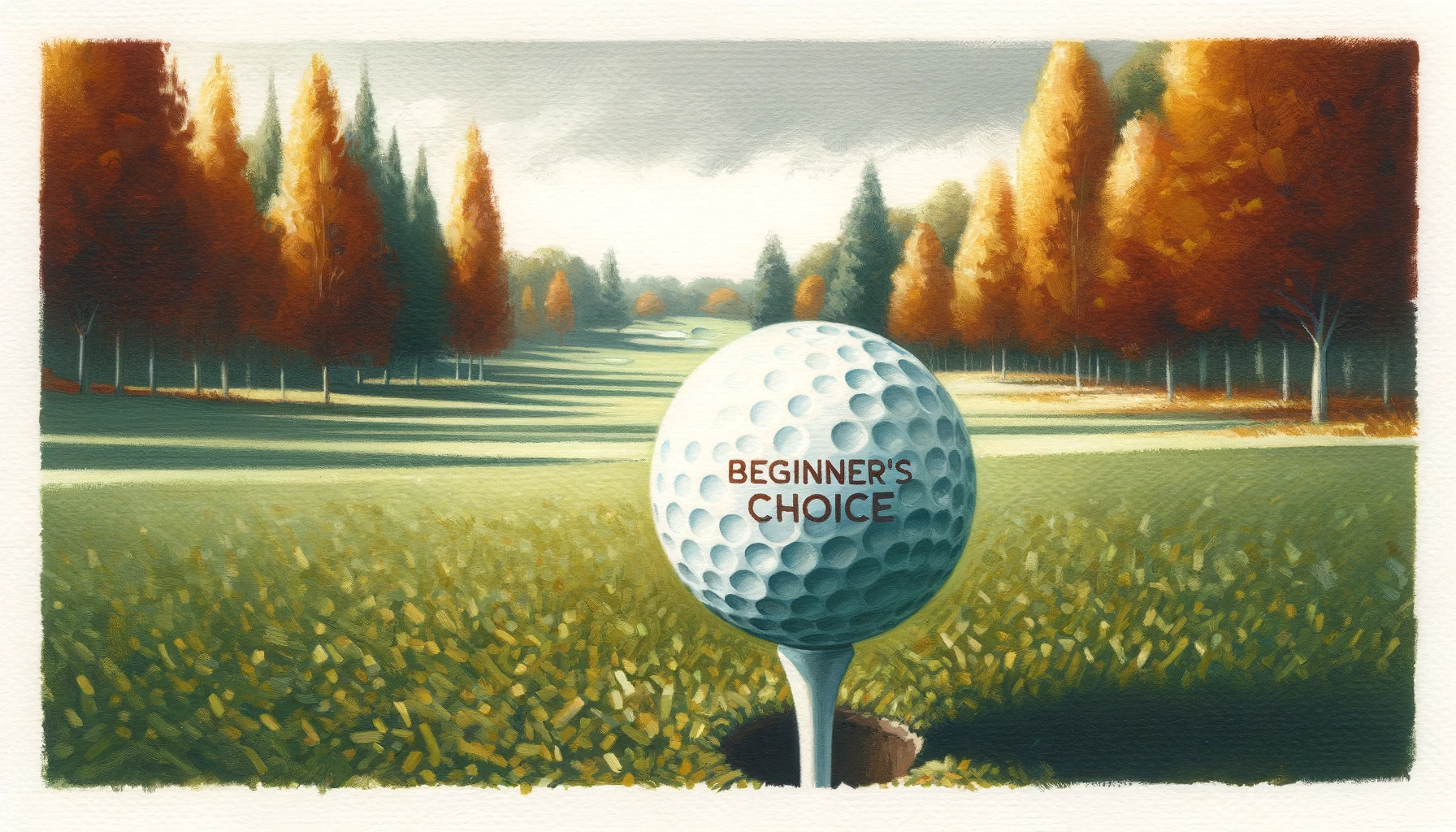 Zooming in on the right choice for beginner golfers
Zooming in on the right choice for beginner golfersEnhancing Your Game: Tips and Tricks for Beginners Using the Right Golf Balls
Great, you've got your golf balls picked out, but how do you make the most of them? Let's dive into some practical tips on choosing and using your golf balls effectively, common pitfalls to avoid as a beginner, and how the right ball can genuinely uplift your game.
1. Practical Tips on How to Choose and Use Golf Balls Effectively
- Experiment with Different Balls: Don't be afraid to try out different brands and types. What works for one golfer might not work for you. Pay attention to how each ball feels off the club and how it behaves in flight.
- Match the Ball to the Course Conditions: If you're playing on a wet course, you might want a ball with more spin to stop it on the green. On a dry, hard course, a softer, low-spin ball might be more beneficial.
- Pay Attention to the Weather: Windy conditions can wreak havoc on high-spin balls. On breezy days, opt for a ball with lower spin to keep your shots more stable.
2. Common Mistakes Beginners Make and How to Avoid Them
- Overlooking the Importance of the Right Ball: Many beginners focus solely on clubs. Remember, the ball is the only equipment used for every shot. Its importance cannot be overstated.
- Getting Swayed by Brand Hype: Just because a brand is popular doesn't mean it's the right fit for you. Test different balls and trust your own experience.
- Ignoring Swing Speed: Not all golfers have the swing speed of a pro. Choose a ball that matches your swing speed. If you have a slower swing, a lower compression ball can be more beneficial.
3. How the Right Golf Ball Can Improve Your Overall Game
- Enhanced Distance: The right ball can help you achieve greater distances, especially important for beginners who are still working on their swing.
- Improved Accuracy: A ball that suits your playing style can help reduce hooks and slices, leading to more accurate shots.
- Better Feel and Control: As you progress, you'll start to appreciate the feel of the ball, especially around the greens. The right ball can improve your short game, giving you more control over chips and putts.
- Increased Confidence: Knowing you're playing with a ball that complements your style can boost your confidence, which is a huge part of the mental game in golf.
Remember, golf is a journey, and finding the right ball is part of that adventure. Don't be afraid to experiment and learn as you go. The right golf ball, matched with practice and patience, can significantly enhance your game and make your time on the course even more enjoyable.
Key Takeaway: Choosing the Best Golf Balls for Beginners
As we wrap up this guide, let's bullet out the key points to remember when selecting the best golf balls for your beginner's journey:
Types of Golf Balls:
- Two-Piece Balls: Ideal for beginners for durability and distance.
- Multi-Layer Balls: Good for intermediate players seeking control.
- High-Performance Balls: Best for advanced players with specific needs.
Factors to Consider:
- Compression: Lower for beginners for better energy transfer.
- Dimple Pattern: Affects flight trajectory and stability.
- Spin: Low-spin balls help reduce hooks and slices.
Top Picks for Beginners:
- Titleist TruFeel: Great feel, slightly higher price.
- Callaway Supersoft: Soft, forgiving, and fun colors.
- Srixon Soft Feel: Balanced performance, durable.
- TaylorMade Noodle Long & Soft: Affordable, great for distance.
Enhancing Your Game:
- Experiment with different balls.
- Match the ball to course conditions and weather.
- Focus on your swing speed and playing style.
Now that you're armed with this knowledge, it's time to take action! Head out to your local golf store or online shop and pick up a few different types of balls. Experiment on the course and see which ones feel right for your game. Remember, the right golf ball can be a game-changer for a beginner.
Don't forget to engage with the Golfeaser community! Share your stories of triumphs and challenges, sign up for our newsletter for more tips and tricks, and keep living by the Golfeaser Manifesto. We're all about improving our game, hitting those long drives, and enjoying every moment on the course.
What golf balls have you tried, and how have they impacted your game? Are there any brands or types you're curious about? Let us know, and let's continue this journey together, one round at a time.
Ready to hit the course with your new knowledge?
Comprehensive FAQ: What Golf Balls Are Best for Beginners
What are the best golf balls for beginners?
What are the best golf balls for beginners?
For beginners, the best golf balls are typically two-piece balls with low compression. These include the Titleist TruFeel, Callaway Supersoft, Srixon Soft Feel, and TaylorMade Noodle Long & Soft. They offer a good balance of distance, durability, and forgiveness.
How does golf ball construction affect performance for beginners?
How does golf ball construction affect performance for beginners?
Golf ball construction significantly impacts performance. For beginners, two-piece balls with a large, solid core and durable cover are ideal. They provide more distance and are less affected by spin, making them more forgiving for inconsistent swings.
Why is compression important in choosing golf balls for beginners?
Why is compression important in choosing golf balls for beginners?
Compression measures the softness of a golf ball. Lower compression balls are softer and deform more on impact, requiring less force to compress. They are better suited for beginners with slower swing speeds, as they help in achieving greater distances.
Should beginners use soft or hard golf balls?
Should beginners use soft or hard golf balls?
Beginners should generally use softer golf balls. Soft balls have lower compression, making them easier to hit for players with slower swing speeds. They provide better distance and a more pleasant feel at impact.
How do dimple patterns on golf balls affect beginners' play?
How do dimple patterns on golf balls affect beginners' play?
Dimple patterns on golf balls affect air resistance and flight trajectory. For beginners, a standard dimple pattern is sufficient as it provides a balanced flight and stability, which is helpful for learning and improving consistency.
What common mistakes do beginners make when choosing golf balls?
What common mistakes do beginners make when choosing golf balls?
Beginners often overlook the importance of the right golf ball, get swayed by brand hype, or ignore their swing speed. Choosing a ball that matches their playing style and swing speed is crucial for improving their game.
How can the right golf ball improve a beginner's game?
How can the right golf ball improve a beginner's game?
The right golf ball can enhance a beginner's game by providing increased distance, improved accuracy, better feel and control, and increased confidence. Matching the ball to the player's abilities and style can significantly impact their performance.
Are expensive golf balls better for beginners?
Are expensive golf balls better for beginners?
Not necessarily. Expensive golf balls are often designed for advanced players and may offer features that beginners cannot fully utilize. Beginners should focus on balls that offer forgiveness and help in developing their skills.
Can beginners use high-performance golf balls effectively?
Can beginners use high-performance golf balls effectively?
High-performance golf balls are typically designed for experienced players with specific needs in spin control and feel. Beginners might find them less forgiving and harder to play with compared to balls designed for their skill level.
How often should beginners replace their golf balls?
How often should beginners replace their golf balls?
Beginners should replace their golf balls when they show significant wear, such as cuts, scuffs, or loss of surface integrity. Regularly using a damaged ball can negatively affect play quality and consistency.



